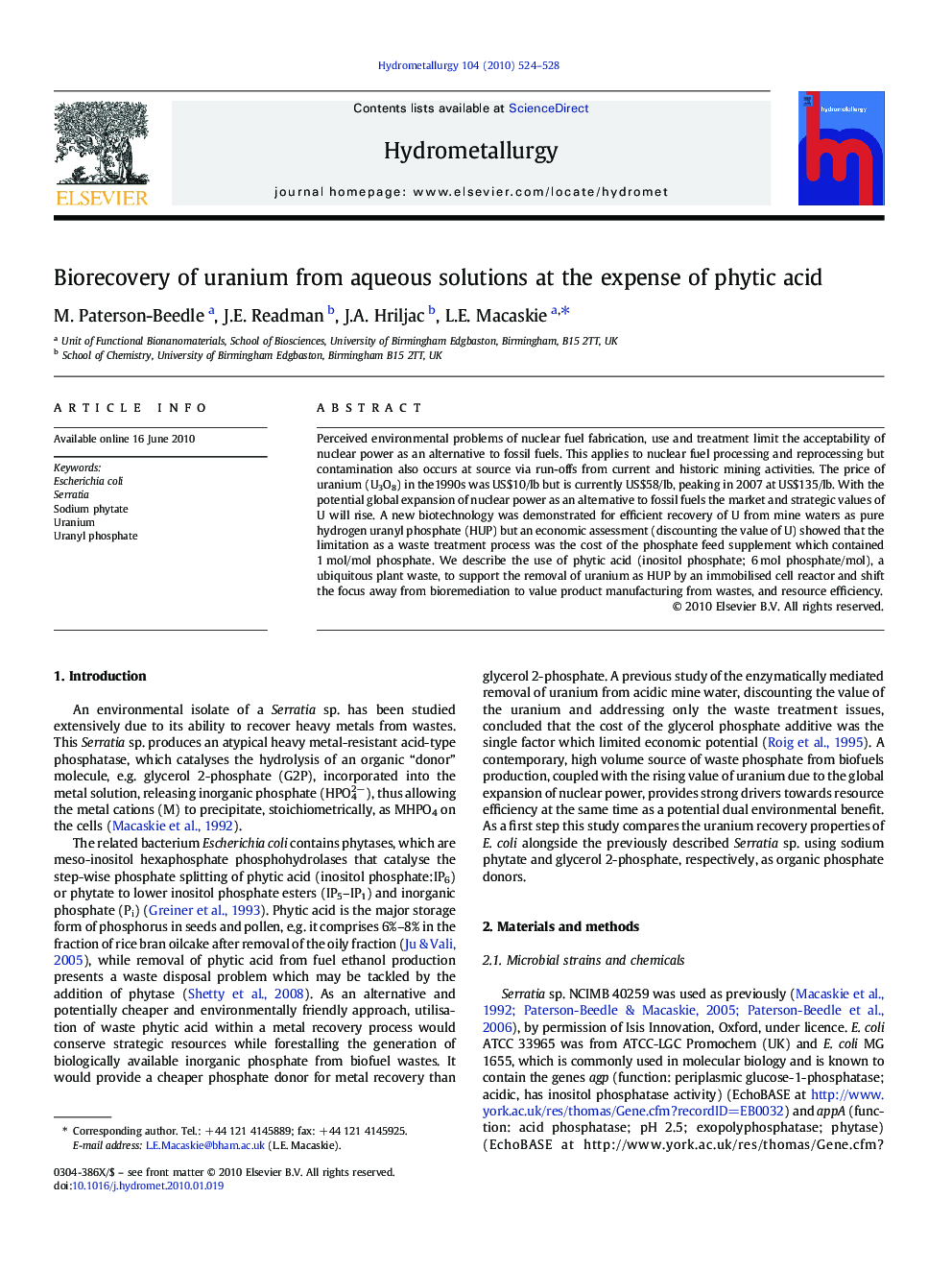| Article ID | Journal | Published Year | Pages | File Type |
|---|---|---|---|---|
| 212921 | Hydrometallurgy | 2010 | 5 Pages |
Perceived environmental problems of nuclear fuel fabrication, use and treatment limit the acceptability of nuclear power as an alternative to fossil fuels. This applies to nuclear fuel processing and reprocessing but contamination also occurs at source via run-offs from current and historic mining activities. The price of uranium (U3O8) in the1990s was US$10/lb but is currently US$58/lb, peaking in 2007 at US$135/lb. With the potential global expansion of nuclear power as an alternative to fossil fuels the market and strategic values of U will rise. A new biotechnology was demonstrated for efficient recovery of U from mine waters as pure hydrogen uranyl phosphate (HUP) but an economic assessment (discounting the value of U) showed that the limitation as a waste treatment process was the cost of the phosphate feed supplement which contained 1 mol/mol phosphate. We describe the use of phytic acid (inositol phosphate; 6 mol phosphate/mol), a ubiquitous plant waste, to support the removal of uranium as HUP by an immobilised cell reactor and shift the focus away from bioremediation to value product manufacturing from wastes, and resource efficiency.
